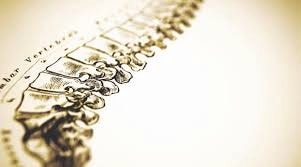Please use Microsoft Edge, Google Chrome or [Firefox](https://getfirefox. com/).

Bachmann Peter (Winterthur)
Do you own or work for Bachmann Peter?
About Us
The supplementary insurance for complementary medicine covers a large part of the costs of osteopathic treatment. We recommend that you clarify the scope of your coverage with your health insurance company in advance.
The principle of osteopathy is that all body systems (bones, joints, muscles, organs, vessels, nerves, etc.) are interconnected. They influence each other. In this way, the body functions as a unit and always tries to remain in balance.
The prerequisite for this self-regulation is optimal functioning of all body systems. In order for these systems to work together properly, the free mobility of each individual body structure must be guaranteed. If this is not the case, we speak of dysfunction. Such a dysfunction prevents the body from activating its own self-healing powers. Symptoms such as pain appear, which present themselves as a result of a number of different dysfunctions. It becomes obvious that self-regulation is overtaxed.
Mainly functional dysfunctions of the different body systems are treated in people of all ages. In case of serious or acute diseases and strong structural-inflammatory changes, the treatment must be accompanied by orthodox medicine.
Symptoms:
- Musculoskeletal system: back pain, tension, poor posture, joint problems, consequences of accidents.
- Head area: dizziness, repeated sinusitis, headache, migraine, temporomandibular joint problems, clenching, grinding of teeth
- Internal area: gastrointestinal problems, respiratory problems, asthma, coughing
- Urogenital area: chronic cystitis, menstrual cramps
- Gynecology: pre-natal care, mother and baby support, post-natal care
- Newborns and babies: belching, breastfeeding difficulties, sleep disorders, crying babies, colics
- Pediatric osteopathy: chronic middle ear infections, learning and concentration disorders, sleep disorders
- Psychosomatics: states of exhaustion
This text has been machine translated.
Services
Amenities
Prices
Languages
Location and contact
Bachmann Peter
-
office address
Stadthausstrasse 143 8400 Winterthur
-
Peter Bachmann
-
Phone
0522... Show number 052 213 43 43
- Visit site Visit site
Ratings and reviews
Do you wish to rate and review "Bachmann Peter"?

There are no reviews for this company yet.
Have you any experience of this company?

* These texts have been automatically translated.
Other listers

Bachmann Peter


